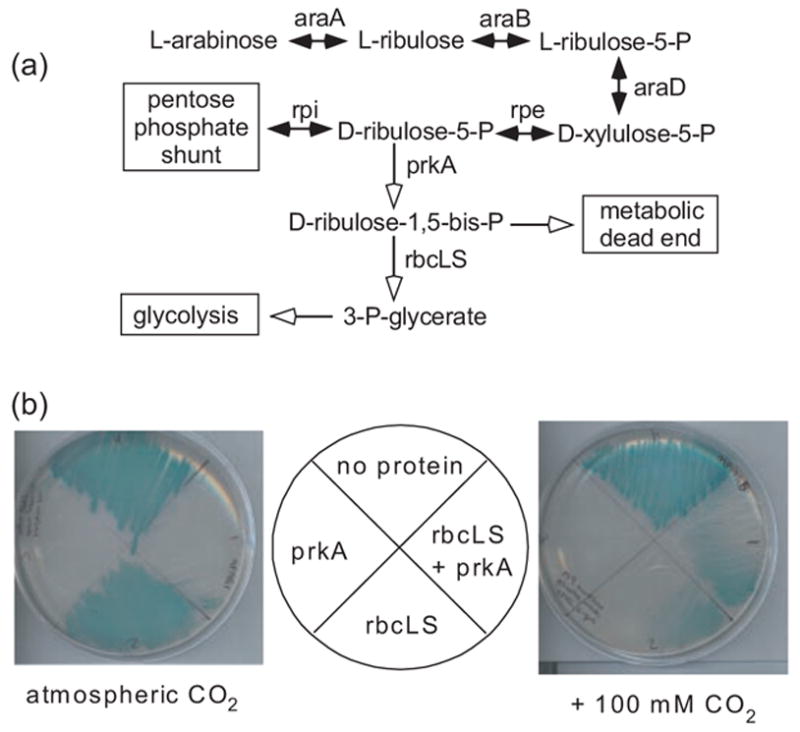Fig. 1.

Metabolic engineering of E.coli. (a) The normal assimilation of L-arabinose into the pentose phosphate shunt is shown (black arrows). The heterologous expression of the Synechococcus PCC7942 phosphoribulokinase (prkA, white arrow) diverts the carbon flux and causes growth arrest. Co-expression of the Synechococcus PCC6301 RuBisCO genes (rbcL/rbcS, white arrow) rescues E.coli from prkA-mediated growth arrest. (b) Wild-type E.coli (strain K-12) were co-transformed with two plasmids: (i) A phosphoribulokinase (prkA) expression vector or pacyc184, PLUS (ii) A RuBisCO (rbcLS) expression vector or pBR322. Each of the four doubly transformed strains were streaked onto quadrants of an M9 minimal media agar plate supplemented with 100 μg/ml ampicillin, 34 μg/ml chloramphenicol, 0.2% L-arabinose, 0.5 mM IPTG and 0.008% X-gal. The plates were placed in quart-sized ziploc bags containing 0 or 5 g of dry ice, which quickly sublimated into gaseous CO2, and incubated for 24 h at 37°C.
